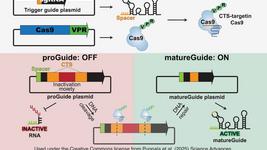RNA-based Therapies for Metabolic Liver Diseases
In the last decade, RNA-based therapies have rapidly emerged as a new approach to treat metabolic liver diseases, offering a brand new class of medicines that differ significantly from conventional drugs.
The broad therapeutic activities of RNA-based therapies range from the silencing of disease-causing genes via small interfering RNAs (siRNAs), antisense oligonucleotides (ASOs) and (CRISPR)- Cas mediated RNA editing, to the replacement of deficient proteins via mRNA therapeutics. In theory, RNA-based therapies can be programmed to target or restore defective genes on an individual basis, allowing for personalised treatments and reducing side effects associated with other therapeutic approaches.
A review article published in Gut this week provides an overview of the various technical modalities used to develop RNA therapies, with a particular focus on the latest advances in metabolic liver disease treatment (1).
The authors describe how RNA-based gene-editing technologies, such as base- and prime editing show promise for safe and effective treatment of disease with their ability to minimise genomic rearrangements and cancer risk. However, while RNA therapies offer high precision, challenges remain in optimising delivery methods and ensuring long-term safety and efficacy. Lipid nanoparticle-based mRNA therapeutics, particularly for protein replacement in rare diseases, have gained support from pre-clinical successes, some of which are also summarised in the review.
Reference:
1. Fontanellas A, Berraondo P, Urigo F, et al. RNA-based therapies in liver metabolic diseases. Gut. 2025 Feb 23:gutjnl-2023-331742.
Tags
CLINICAL TRIALS
Sponsors:
Base Therapeutics (Shanghai) Co., Ltd.
Sponsors:
Base Therapeutics (Shanghai) Co., Ltd.







